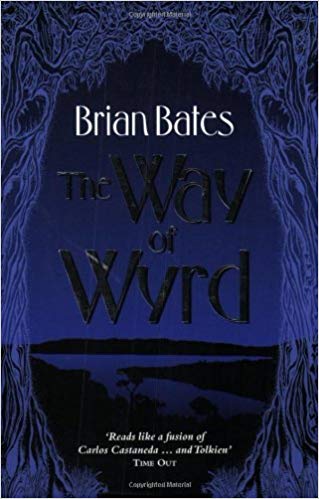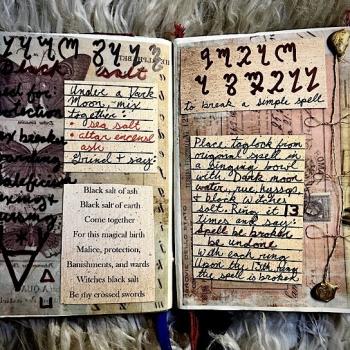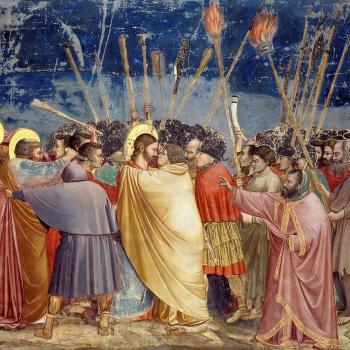
“Wyrd”, says one scholar, “is the compelling power and final destiny which no man and no thing may escape”. We can’t escape time: it is. We can’t escape our fate, our wyrd: it is… But there’s always a choice, there’s always a twist… [Graves, 1995]
Witchcraft and magic is a funny thing. There are multiple theories, from ancient to modern, and techniques to work, not all necessarily in agreement. Many require the use of tools, props or equipment, while other techniques call for little but the strong ability to visualise and ‘will’. There is, however, a powerful and antique influence with which any attempt to subvert the course of events must contend. It is with this fundamental force, this universal and indiscriminate faculty of reality, which any magic must work. The 10th Century Anglo-Saxon poem, The Wanderer, summarises this most succinctly when it declares: “Fate is wholly inexorable!“, plainly stating the ubiquitous and inescapable nature of this Truth. Any magic, from supplication and prayer, to incantation and spell, is intrinsically concerned with the workings of Fate.
This brief note may be regarded as the tiniest signpost after the bold attempts of other, better minds into the place of Fate and Wyrd in the arena of witchcraft. Such scholarly minds as Professor of Psychology, Brian Bates, Maid of the Clan of Tubal Cain, Shani Oates, and many an occult writer since has tried to elucidate on this most complex of subjects. Indeed, for this writer to attempt any endeavour to capture the essence of Wyrd, or comprehend, apprehend and uncover its mechanics, is destined to be as successful as grasping to hold water.
That being said, in the early 1990s, a few thinkers began to approach reality and magic through the perspective of the ancient technology of Wyrd, an Anglo-Saxon term which denotes the web of interconnecting strands which makes up our reality through time and space. This term, wyrd, is the origin of our own modern weird, denoting something that is out of the ordinary, remarkable or not confirming with expectation.

I first came across Brian Bates’ fictional work, The Way of Wyrd, when it was republished by Hay House in 2004. At the time, I was working in an occult shop in Stratford upon Avon, and was gifted a copy of Bates’ book, which was a new arrival, by the owner. The shop has since moved locations and changed somewhat, but the copy of Bates’ book captured my imagination and I was fortunate enough, a few years later, to attend a workshop with Brian Bates in Brighton which explored the shamanic universe of the Anglo-Saxon sorcerer and Wyrd. By the time of meeting Bates, I had acquired a copy of his out of print Wisdom of the Wyrd and other works which explore further the concept of Wyrd in native western mythologies.
First published in 1984, and following study of the Anglo-Saxon Lacnunga, Bates’ Way of Wyrd emerged as a counter to the thriving trend of Eastern Mysticism. Indeed, Bates identifies this journey from Eastern ancient practices and works to investigating and revealing native Western mystical practices and produced the accompanying Wisdom of the Wyrd. This latter 1996 work is out of print and rare, but a thoroughly interesting read. In many respects, then, wyrd mirrors eastern concepts such as the universal Tao.
Fate does not attack, yet all things are conquered by it;
It does not ask, yet all things answer to it;
It does not call, yet all things meet it;
It does not plan, yet all things are determined by it. [Tao Te Ching]
Another thinker, writer, researcher, business analyst and educator sought to explore the relationship between science, technology and magic in his 1990 book, Inventing Reality, in which Tom Graves laid much of the groundwork for his future writings with Wyrd. Working to understand the structures of reality and belief, Graves soon moved into tackling Wyrd, observing the interplay of Fate and Time and the effects these have upon our lives. In particular, Graves notes that our own perspective plays an integral part in the patterning of our world and our interpretation of events is itself a key factor. From the start of his first book dealing with Wyrd, Positively Wyrd (1995), Graves makes clear that we are blessed with choice, the ability to consciously engage and become co-creators of our world by working with fate: “We change our world by changing our choices…”.
Belief is a peculiar kind of magic: a habit of thought, an idea that becomes real by filtering reality. With a different belief, we not only change our perception of the world, but our actual experience of it. [Graves, 1995]
These ideas are well represented and reflected in modern traditional witchcraft, through the writings of the Clan of Tubal Cain, in particular Evan John Jones and Shani Oates, as well as other authors from different streams and traditions of witchcraft and paganism. Indeed, Wyrd was chosen for the title of the bi-annual journal from Three Hands Press. It would be impossible, however, to cover this subject in a pithy blog post and there is sufficient material available for the diligent and interested parties to seek and begin the fascinating journey into engaging the ‘web of wyrd’.

I also urge interested readers to please visit Tom Graves’ website Wyrdsmiths to delve deeper into the meaning and purpose of wyrd. This website is from the very early noughties, but still relevant and packed with information.
Graves, T. (1995) Positively Wyrd, Gothic Image Publications, Glastonbury

















